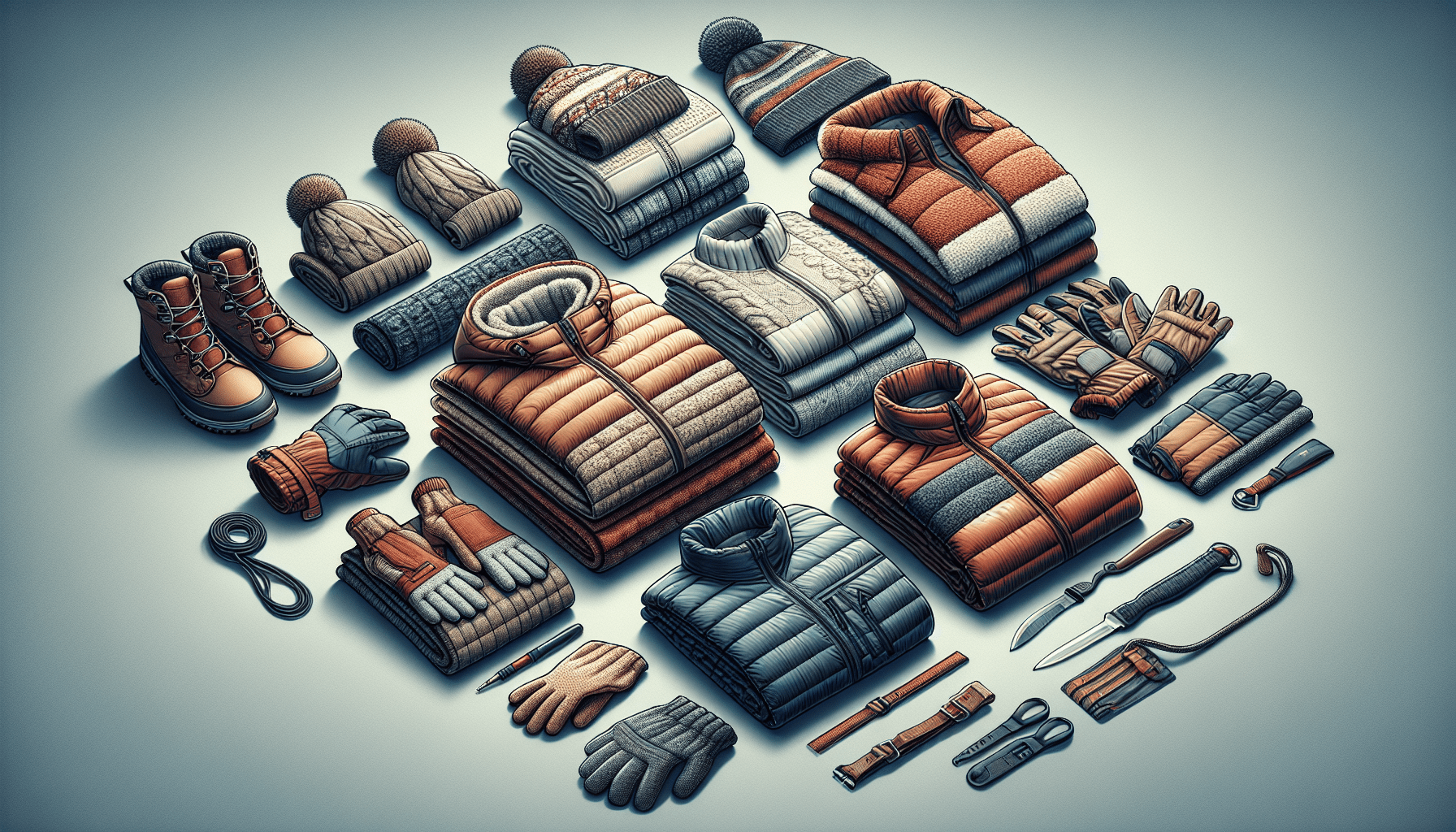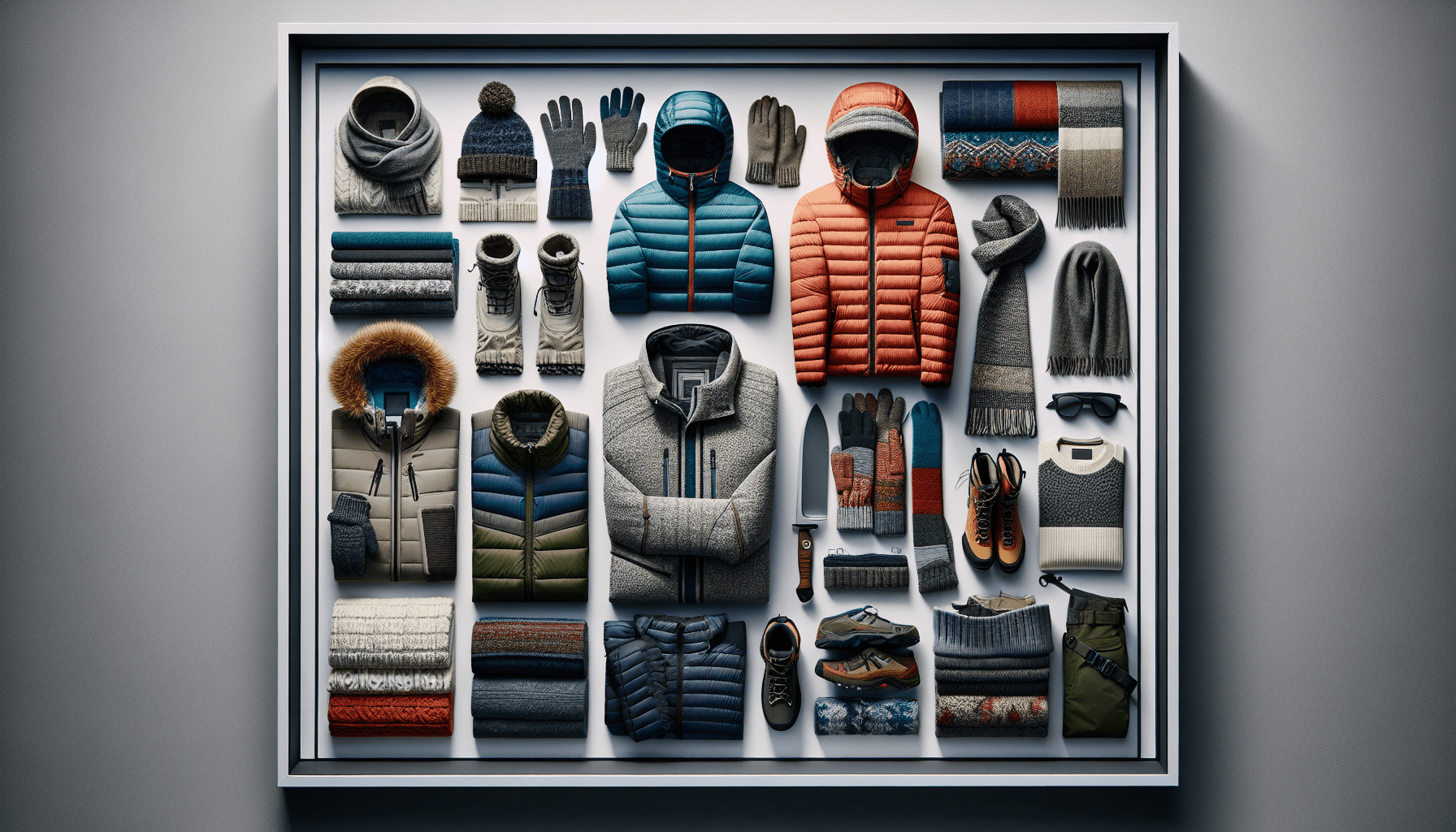Travelers Club Chicago Hardside Expandable Spinner Luggage, Black, 20" Carry-On
$36.54 (as of April 16, 2025 04:30 GMT +00:00 - More info)Have you ever wondered how to stay comfortable and warm in cold weather without feeling bundled up like a marshmallow? Understanding the importance of layering can make all the difference in maintaining your core temperature and comfort. Layering, an age-old technique, is essential for anyone braving the elements, whether you’re an outdoor enthusiast or just navigating your daily routine during winter.

Top domestic vacation destinations
The Importance of Layering for Cold Weather Comfort
Layering is not just about wearing multiple clothes; it’s about strategically combining different pieces to manage your body temperature, keep you dry, and protect you from the environment. Let’s delve into why layering is so effective and how you can master it.
Layering Importance
Layering is crucial because it helps you regulate your body temperature. When done correctly, it enables you to add or remove garments as conditions change, which can be lifesaving in unpredictable weather. Moreover, layering helps manage moisture from sweat, which is key for staying dry and warm.
Three Main Layers
To fully appreciate the benefits of layering, you need to understand the three primary layers: the base layer, the middle layer, and the outer layer. Each serves a distinct purpose.
Base Layer
The base layer is the foundation of your layering system. It is designed to manage moisture by wicking sweat away from your skin, helping you stay dry and comfortable. Common materials for base layers include merino wool and synthetic fabrics. Avoid cotton, as it retains moisture, making you cold when the temperature drops.
Materials Matter
- Merino wool: Naturally wicks moisture, odor-resistant, comfortable.
- Synthetic fabrics: Quick-drying, durable, budget-friendly.
Middle Layer
The middle layer is all about insulation. This layer traps body heat to keep you warm. Depending on your activity level and the weather conditions, you might choose fleece, down, synthetic insulation, or wool.
Material Choices
- Fleece: Lightweight, breathable, moisture-resistant.
- Down: Excellent warmth-to-weight ratio, compressible.
- Synthetic insulation: Retains warmth when wet, dries quickly.
- Wool: Warm, breathable, versatile.
Outer Layer
The outer layer shields you from wind, rain, and snow. It needs to be both waterproof or water-resistant and breathable so that moisture can escape from underneath, preventing you from getting clammy. Outer layers might be made from Gore-Tex, nylon/polyester blends, hardshells, or softshells.
Material Highlights
- Gore-Tex: Highly water-resistant, breathable.
- Nylon/Polyester: Durable, weather-resistant.
- Hardshells: Robust protection, minimizes water penetration.
- Softshells: More comfortable, flexible, resistant to light precipitation.
Key Reasons for Layering
Now that you understand the different layers, it’s important to grasp why layering is so effective.
Temperature Control
Layering allows for easy temperature control. You can add layers when you feel cold or remove them when you start to warm up, enabling you to stay comfortable in a wide range of conditions.
Moisture Management
Effective layering wicks moisture away from your body, keeping you dry, which is crucial for staying warm in cold climates. Managing sweat is as important as shielding yourself from external moisture.
Versatility
Layering makes your outfit adaptable to various conditions and activities. Whether you’re hiking, skiing, or just walking around the city, you can adjust your layers to suit the situation perfectly.
Comfort
Freedom of movement is paramount for outdoor activities as well as daily tasks. Proper layering ensures you remain mobile and comfortable, preventing you from feeling restricted by your clothing.
Layering Tips
To maximize the benefits of layering, consider the following tips for each layer.
Base Layer
Choose your base layer based on the activity and temperature. Lightweight options work well for high-intensity activities or milder weather, while midweight and heavyweight layers provide extra warmth for colder conditions.
Do’s and Don’ts
- Do: Use moisture-wicking materials like merino wool or synthetics.
- Don’t: Wear cotton, as it absorbs moisture and dries slowly.
Middle Layer
Select your middle layer based on the required insulation. Fleece is great for milder conditions, down offers unbeatable warmth for its weight, and synthetic insulation performs well in wet environments.
Considerations
- Activity level: Higher exertion may require less insulation.
- Core warmth: Vests target core warmth without restricting arm movement.
Outer Layer
Your outer layer should be able to accommodate your base and middle layers comfortably. It should offer protection without limiting your range of motion.
Key Features
- Waterproof/water-resistant: Essential for wet conditions.
- Breathable: Allows moisture to escape.
- Fit: Should fit over other layers without being too tight.

Search vacation packages & trips
Activity-Specific Tips
Different activities call for different layering strategies. Here are some tailored tips for common cold-weather pursuits.
Hiking/Backpacking
For hiking or backpacking, you need a lightweight base layer, a fleece middle layer for insulation, and a waterproof outer layer. Opt for materials that can withstand wear and tear, keeping you warm and dry throughout your adventure.
Recommended Setup
- Base layer: Lightweight merino wool or synthetic.
- Middle layer: Fleece jacket.
- Outer layer: Waterproof and breathable shell.
Skiing/Snowboarding
For skiing or snowboarding, your layers need to balance warmth and freedom of movement. A snug thermal base layer, an insulated middle layer, and a windproof outer layer will keep you comfortable on the slopes.
Recommended Setup
- Base Layer: Snug-fitting thermal.
- Middle Layer: Insulated jacket.
- Outer Layer: Windproof and waterproof shell.
Everyday City Exploration
Navigating the city in winter requires layers that offer warmth without sacrificing style. A merino wool base layer, a stylish and versatile middle layer, and a weather-resistant outer layer will keep you warm and fashionable.
Recommended Setup
- Base Layer: Merino wool top.
- Middle Layer: Stylish sweater or jacket.
- Outer Layer: Weather-resistant coat.
Accessories
Don’t forget about accessories, as they are essential for additional warmth and protection.
Essential Accessories
- Hats: Keep your head warm, especially important as a lot of heat can be lost there.
- Gloves: Protect your hands from the cold, making sure they’re insulated and waterproof if needed.
- Scarves: Add extra warmth to your neck and can also prevent drafts.
- Warm Socks: Insulated socks can keep your feet warm and dry.
- Insulated Footwear: Boots that are both warm and waterproof are critical for cold weather.
Additional Considerations
To maximize the effectiveness of your layering system, there are a few additional factors you should keep in mind.
Avoid Overdressing
Overdressing can cause you to sweat excessively, which can lead to chilling once the sweat cools. It’s better to start slightly cool and warm up with activity, so don’t pile on too many layers at the outset.
Proper Gear Maintenance
Taking care of your clothing extends its life and maintains its performance. Follow care instructions diligently, especially for specialized materials like wool or down. Proper maintenance includes washing, drying, and storing items correctly.
Care Tips
- Wash according to label instructions.
- Air-dry when possible.
- Store in a dry, cool place.
Common Mistakes to Avoid
Understanding common mistakes can help you become more proficient at layering.
Common Pitfalls
- Skipping the Base Layer: This can compromise moisture management.
- Overlayering: Too many layers can restrict movement and lead to sweating.
- Neglecting Fit: Ill-fitting layers can create discomfort and reduce effectiveness.
- Ignoring Accessories: Overlooking small items like hats and gloves can lead to significant heat loss.
By being mindful of these mistakes, you can optimize your layering strategy to ensure comfort and effectiveness.
Conclusion
Mastering the art of layering takes a bit of knowledge and practice, but the rewards are well worth the effort. Whether you’re hitting the slopes, hiking, or simply navigating your daily routine in winter, understanding how to layer effectively will keep you warm, dry, and comfortable. Remember, the key to successful layering lies in the materials you choose for each layer and the flexibility to adapt to changing conditions. So stay informed, choose wisely, and enjoy your cold-weather activities with confidence.
When you prioritize layering, you not only enhance your comfort but also ensure that you’re well-prepared for whatever winter throws your way. Stay warm and relish the season’s adventures!






